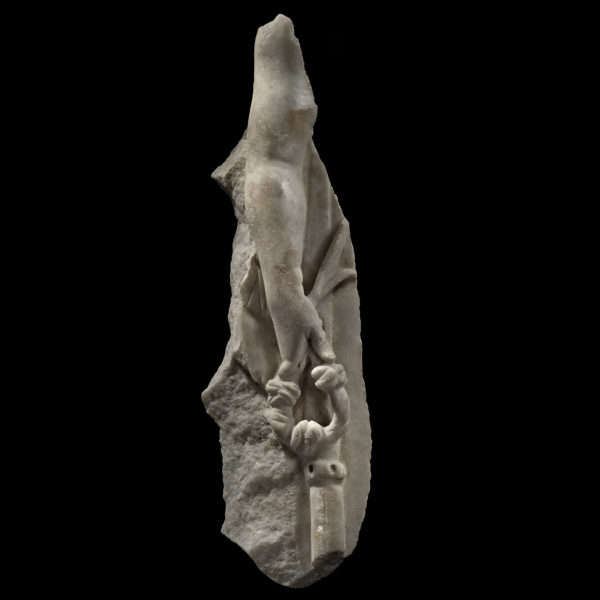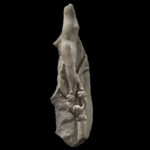Fragment from a Season Sarcophagus
Roman
3rd century AD
Marble
Length: 19 inches (48.2 cm)
This evocative marble relief fragment depicts a well-modeled and highly polished arm carrying a twisted and bound wreath or garland. The garland ends in a leafy spray and is held before a sturdy staff upon which the figure would have rested. Use of the running drill can be seen in the general outline of the arm and certain points near the base of the staff and at the junction between the thumb and forefinger. Iconographically, a figure holding this type of wreath in this way is identified as the season of Spring. The remains of a short cloak that draped over his shoulders are visible at the left. The figure would have carried additional attributes, most typically, a flower-filled basket and may have worn a wreath on his head.
The four seasons were depicted in relief on Roman sarcophagi from the 3rd century AD and are known in may types and sub-types. They are thought to express the notion of change and renewal over time. For this reason, and because many Seasons are depicted as small Eros-like figures, the iconography was particularly associated with children.

